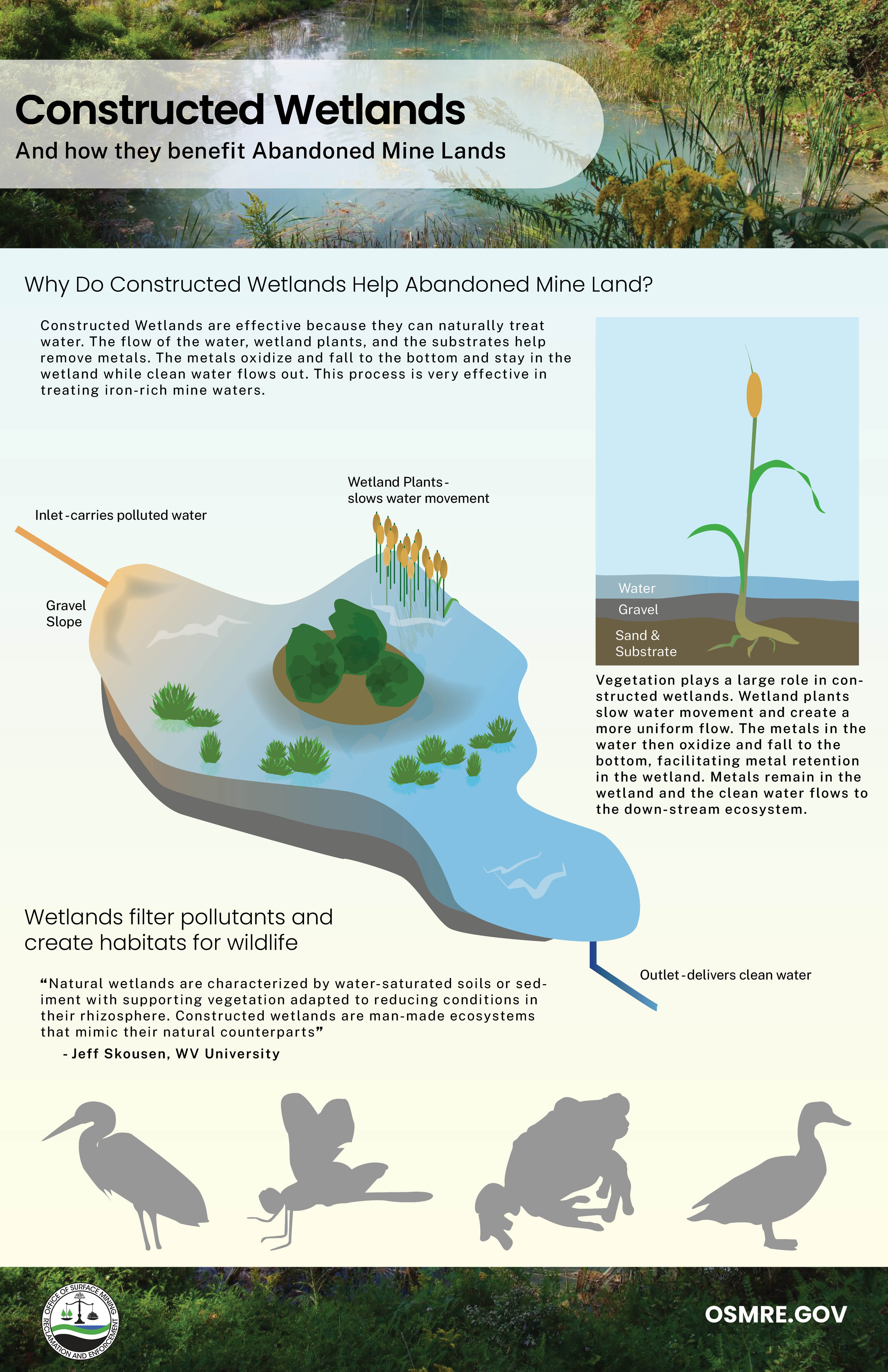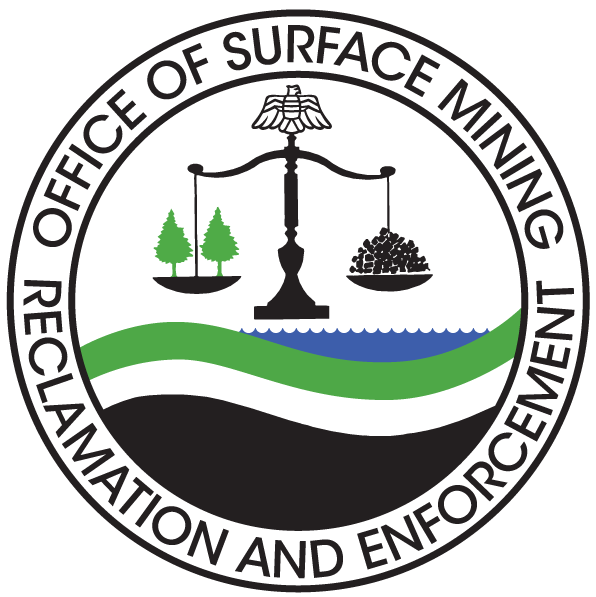Constructed Wetlands for Mine Drainage Treatment
By: Bailey Knotts
2/2/2022
 One of the most obvious tell-tale signs of abandoned coal mine pollution is mine drainage. A bright orange oxidized iron or a milky white aluminum, that spreads to local waterways devastating habitats and ecosystems. How is this issue solved? OSMRE, States, and Partners will commonly use constructed wetlands. They are a unique solution that remove metals from the water and improve water quality for the downstream ecosystem.
One of the most obvious tell-tale signs of abandoned coal mine pollution is mine drainage. A bright orange oxidized iron or a milky white aluminum, that spreads to local waterways devastating habitats and ecosystems. How is this issue solved? OSMRE, States, and Partners will commonly use constructed wetlands. They are a unique solution that remove metals from the water and improve water quality for the downstream ecosystem.
Depending on location, acidity, and other requirements there are many ways to construct a wetland. However, the process generally includes planning the shape and excavating a shallow space or using a preexisting pond then flooded with gravel, soil, and organic substrate for plant growth. It may also be necessary to incorporate hydraulic controls and piping to control water height and flow.
Some wetlands utilize limestone to raise the pH of the water. Limestone helps disassociate some of the metals in the water, then the metals will bind to the limestone.
Vegetation plays a large role in constructed wetlands. Wetland plants slow water movement and distribute flow. The metals in the water then oxidize and fall to the bottom, facilitating metal retention in the wetland. Metals remain in the wetland and clean water flows to the down-stream ecosystem.
Water quality, erosion control, habitat creation, education, and filtration are all benefits from creating a wetland. If you would like to read more or see an example of a constructed wetland please visit: https://youtu.be/8nYRFclbpUE

